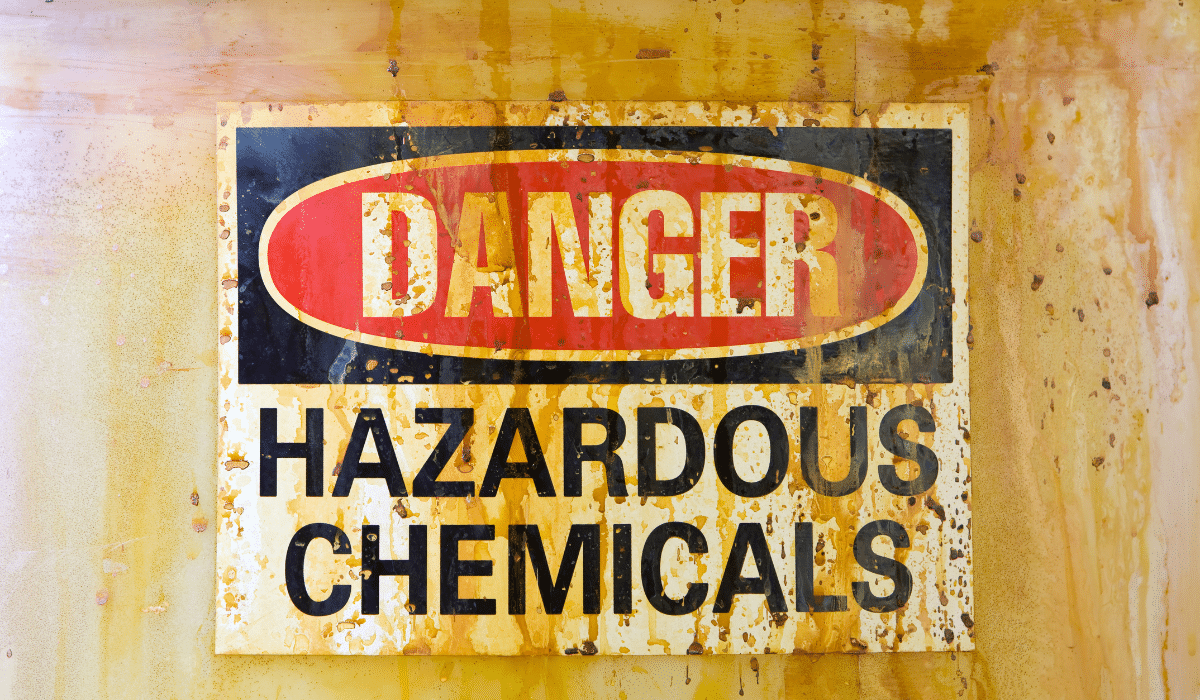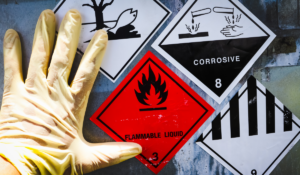In a tragic incident in June 2023, a 52-year-old leach tank operator at a chemical manufacturing facility lost his life due to fatal chemical and thermal burns, a safety oversight which never should have happened.
Sadly, the subsequent federal investigation by OSHA revealed that simply following required safety regulations could have prevented the incident.
Here, we’ll explore the details of the accident, the investigation findings, and the pressing need for a cultural shift towards prioritizing worker safety in the workplace.
Let’s break it down.
Related Article: Chemical Hazards Leave Plant Facing $292K In Fines
Related Article: How to Protect Workers from Dry Ice & Liquid Nitrogen

Fatal Burns and Safety Oversight
The terrible incident unfolded when the employee, with just two months on the job, opened an air intake valve to inspect a noise emanating from a barium sulfide wash cone with a steam line left open the previous day.
A rush of cold air in the steam line created a bubble, pushing heated sludge onto the worker, resulting in fatal chemical and thermal burns.
In addition to the fatality, a second worker suffered second-degree burns across their upper body.
OSHA Investigation Findings
First Incident Analysis:
OSHA investigators determined that the fatal incident was rooted in a failure to adhere to required safety regulations.
The employee’s exposure to thermal and chemical hazards could have been prevented if energy control procedures were established, creating a safer working environment.
Second Incident Revelation:
During the course of the investigation, OSHA uncovered another concerning incident. Twenty-five days after the fatal event, another employee inspecting a leaking gasket under a tank full of sodium hydroxide solution suffered chemical burns when the tank overflowed.
Although this incident remains under investigation, it nonetheless indicates a pattern of safety oversights within the company.
Penalties and Accountability
Violations Unveiled:
OSHA identified several serious violations within the company, including failure to establish energy control procedures, neglect in inspecting these procedures periodically, and the existence of slip and trip hazards on mid-tier catwalks due to corrosion.
Entrapment hazards were also noted as emergency exit routes were not clearly marked.
Furthermore, the facility lacked readily accessible safety data sheets for hazardous chemicals.
Proposed Penalties:
In response to the identified violations, OSHA proposes penalties totaling $55,403, as stipulated by federal statute. This financial consequence emphasizes the gravity of the safety oversights and serves as a call for accountability.
The company has 15 business days from receipt of citations and penalties to comply, request an informal conference with OSHA, or contest the findings before the independent Occupational Safety and Health Review Commission.
The Urgent Need for Cultural Change
OSHA’s Perspective:
OSHA Area Office Director Jeffery Stawowy in Atlanta-West highlighted that the investigation revealed the company’s failure to prioritize employee safety.
The consecutive serious incidents within weeks underscore the need for a cultural shift within the company to prioritize worker safety and health.
Call for Change:
Stawowy emphasized that the existing culture at the company must change to emphasize worker safety and health. OSHA is committed to monitoring the situation and holding the company accountable until substantial changes are implemented.
Addressing the Lapses
Establishing Robust Procedures:
To prevent incidents like these, companies must prioritize the establishment of robust energy control procedures.
Regular inspections and adherence to lockout/tagout protocols are critical components of maintaining a safe working environment.
See OSHA’s Guidelines on Control of Hazardous Energy (Lockout/Tagout)
See OSHA’s article on Compliance Assistance Specialists (CAS)
Addressing Structural Hazards:
Slip and trip hazards, such as corroded catwalks, must be promptly addressed to eliminate potential risks. Regular maintenance and inspections are essential in ensuring the structural integrity of workplace facilities.
See OSHA’s Guidelines on how to Develop your Safety + Health Program
Enhancing Emergency Preparedness:
You can easily mitigate entrapment hazards by clearly marking emergency exit routes, and ensuring they remain clear for use in emergency situations.
This simple, yet crucial measure, contributes to a safer work environment – and keeps you out of trouble with OSHA.
See OSHA’s Guidelines on Emergency Preparedness and Response
Key Takeaways
This tragic incident serves as a poignant reminder of the profound consequences that safety oversights can deal to workers’ lives.
As OSHA brings forth penalties and calls for cultural change, it’s time to take notice. Prioritize safety, implement rigorous procedures, and foster a workplace culture that places the well-being of your employees above all else.
The urgent need for a systemic shift towards safety consciousness is paramount to prevent such tragedies in the future.
About Worksite Medical
In most cases, OSHA requires medical surveillance testing, and at no cost to employees.
Worksite Medical makes that program easier with mobile medical testing.
We conduct on-site respirator fit tests, as well as audiometric exams, pulmonary function tests and heavy metal lab work, right on your job site. We also keep accurate, easy-to-access medical records for your convenience. You’ll keep your employees at work, and stay ahead of OSHA inspections.




